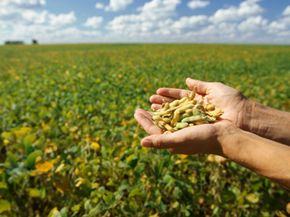Just when you thoughtsoybeanswere grown mainly for soy burgers andhot dogs, products made from those lively legumes seem to be everywhere in the home and beyond: behold soy-based insulation -- and soy carpet backing, soy ink,soy diesel fuel, soy animal feed and so on. Or rather, "and soy on." For example, Americans used 450 million gallons of soy-based diesel fuel in 2007, compared with 25 million gallons in 2002 [source:United Soybean Board].
And so the question arises: why soy for building materials, fuel andfood? Perhaps most importantly, as the United Soybean Board points out, soybean farming equals American jobs. Ever driven through or flown over Iowa? It's either soy orcornas far as the eye can see, and someone needs to work those fields.
Advertisement
Soy is a renewable and sustainable material. Consider this three-step process: plant, harvest, plant again. That's a far cry from the drilling of fossil fuels, which were eons in the making and are nonrenewable. Growing soy involves no drilling, no spilling and no sending Americandollarsoverseas.
But you may wonder; with soy used for building materials like house insulation, won'tinsectsandrodentsstop by for a meal? Not to worry -- by the time soy is transformed into an oil for use in soy-based building products, all food value is gone. In fact, these products tend to be naturally pest-resistant without added chemicals, making soy-based products attractive to those with chemical sensitivities or those who simply want cleanerindoor air.
One of the increasingly popular uses for soy is soy-based insulation. It may not be on your walls yet, but it could be in the near future. Find out how on the next page.
Advertisement





